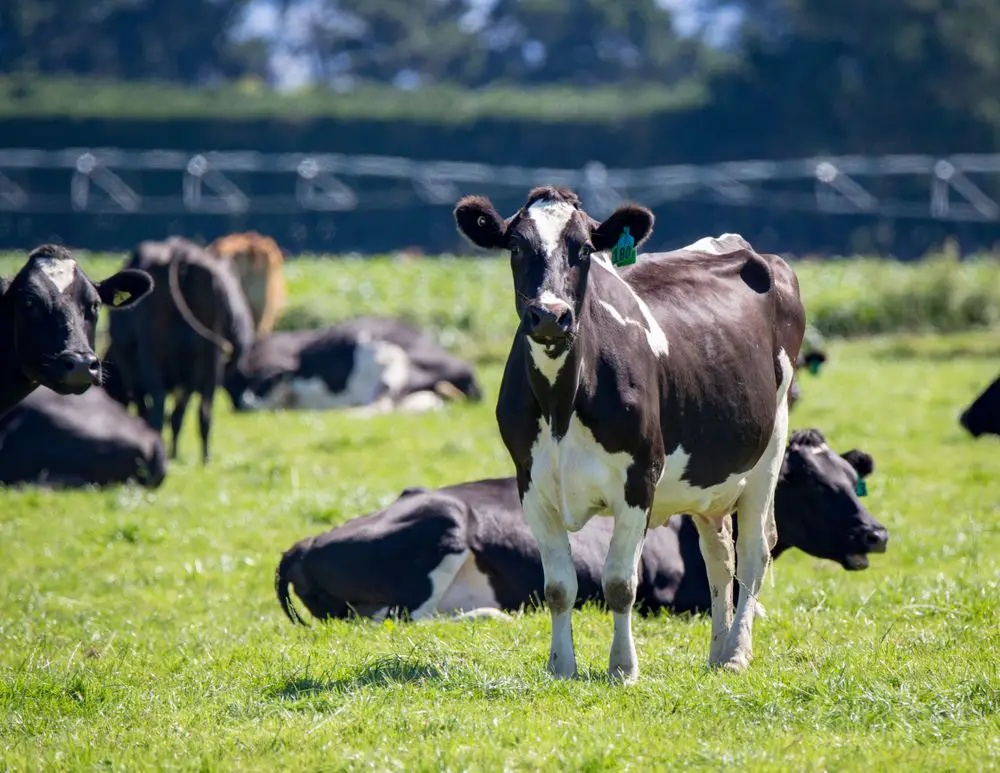Among dairy breeds, the name Friesian is well-known in the dairy farming industry with excellent milk production. Friesian cattle are excellent breeders and produce high-quality meat, making them a great dual-purpose breed.
The Dutch Friesian cow is often crossed with White Holstein cattle to produce Holstein-Friesian cows, which have the highest dairy production among dairy animals worldwide.
Whether used for milk or meat, Friesian cattle are highly useful cattle with excellent genetics.
Table of Contents
Where Does The Friesian Come From?
The Friesian breed stems from the importation in the 18th century of black and white cattle to Holland and Friesland to replace cattle lost to flooding and disease. These cattle mixed with local Dutch cattle and the mixing of these two breeds produced the modern Dutch Friesian.
Two color varieties existed amongst Dutch Friesian cattle, black-pied and red-pied.
The two were kept separate and continued to be segregated as other countries preferred the black and white variety. The red-pied Dutch Friesian exists today in small numbers and is endangered.
Two herdbooks exist for Dutch Friesian cattle. The Netherlands herdbook was founded in 1873, while the Friesland herdbook was established in 1879.
The first Dutch Friesian cow to come to the United States was purchased by a man named Winthrop Chenery in 1852 who bought a Friesian cow in New York from a Dutch captain who had the cow aboard his ship to provide milk for his crew. Noting the superior milk performance of the cow, Chenery began to regularly import Friesian cattle to America.
In the 1970’s, the United States was asked to export Holsteins to the Netherlands, in order to improve milk production in native Dutch Friesian cows.
This cross proved quite successful, producing much larger cattle that had incredible dairy output (Holstein-Friesian cattle). So much Holstein blood was introduced to the Dutch Friesland that today, the Dutch Friesian has between 25 to 75 percent Holstein blood.
Today, Friesian cattle can still be found as a separate breed throughout North America, Holland, the United Kingdom, and New Zealand.
Friesian Cattle Breed Characteristics
| Official Breed Name | Friesian |
| Scientific Name | Bos taurus taurus |
| Origin | Netherlands |
| Appearance | Black and white or red and white pattern Typically horned |
| Calf Weight | 83lbs at birth |
| Mature Cow Weight | 1200lbs to 1400lbs |
| Mature Bull Weight | 2000lbs to 2600lbs |
| Ready To Breed | 15 months |
| Gestation Period | 279 days |
| First Calvings | 24 to 30 months |
| Time to Slaughter | 28 to 30 months |
| Carcass Weight | 700lbs |
| Expected Lifespan | 16 to 20 years and productive for 12 to 14 years |
| Known For | Milk production, fertility and feed efficiency High-fat and high-protein milk Low somatic cell counts and disease resistant |
| Climate | Adaptable but excel in colder climates |

What Is So Special About Friesian Cattle?
Friesian cows are known as one of the best dairy cows for milk production and produce excellent quality milk with a butterfat percentage over 4 percent.
The milk is also high in protein, with 3.3 to 3.5 percent regularly attained.
Dutch Friesian cows typically produce 11,500lbs or 5222 kg of milk per lactation period.
Dutch Friesian cattle are regularly crossbred with Holstein cows to produce the Holstein-Friesian, which offers the highest milk yield of any crossbred dairy cattle in the bovine world.
Friesian cattle are also used to improve other breeds and are regularly crossed with both Simmental and Jersey cattle. The high fertility of Friesian cattle, along with their hardiness, make them an excellent choice to add hybrid vigor to other breeds.
Studies with Friesian cows show that they can be fed beet-top silage treated with lactic acid bacteria instead of corn-silage lowering feed requirements without it affecting milk quantity.
Why Should I Raise Friesian Cattle On My Farm?
- Cows regularly have between 12 and 15 lactation periods, more than any other breed of dairy cattle
- Friesian cows are desirable as suckler cows because of the richness of their milk
- Male calves are easily fattened for high-quality beef
- The meat from Friesian cattle is lean, tender, and grades high
- Carcass weights are around 700lbs and have more than a 50% yield
- Heifers and cows are highly fertile and calf more easily than other breeds
- Friesians are known worldwide and markets exist for both milk and meat
- Friesians require less replacements than other breeds
- Bulls can be used as sires for semen production
- Known for high feed efficiency
- Adaptable to different environments and management systems
- Have low somatic cell counts and less incidents of mastitis
